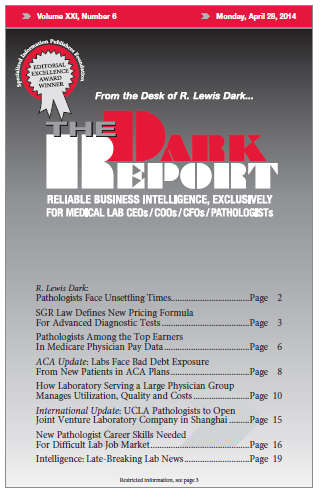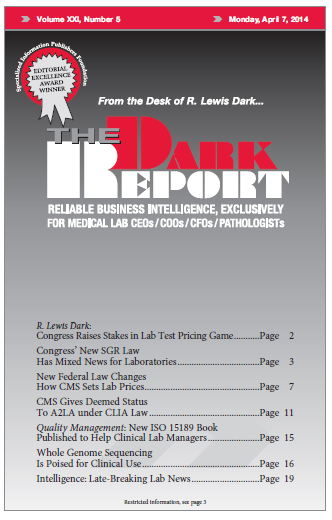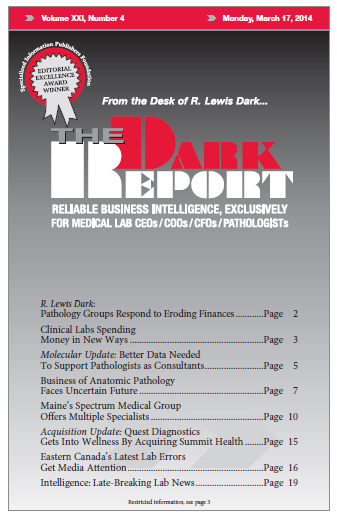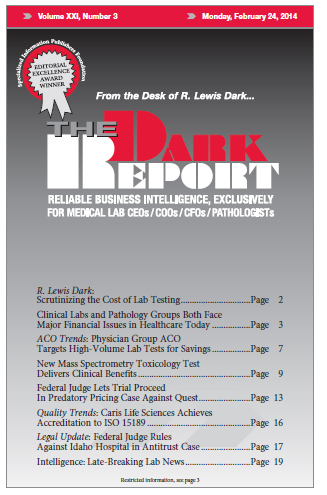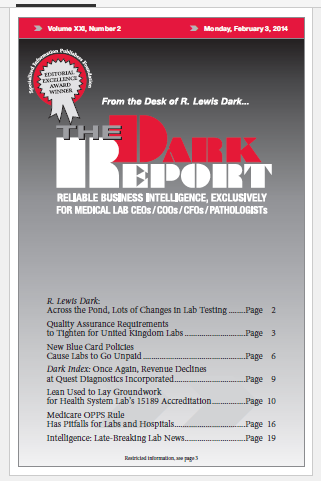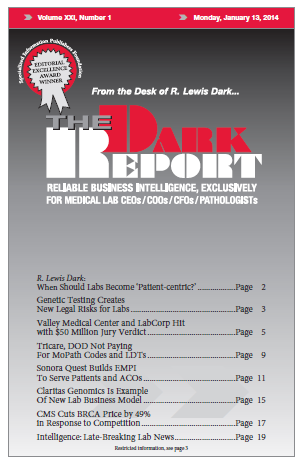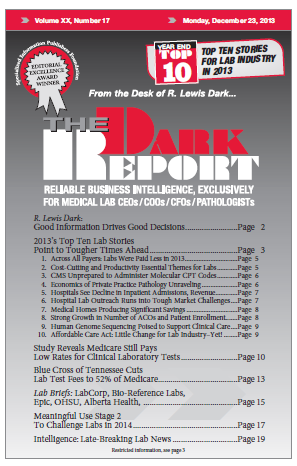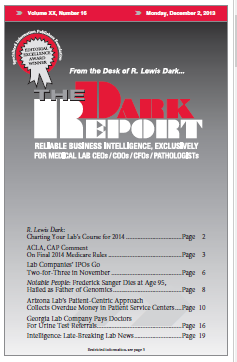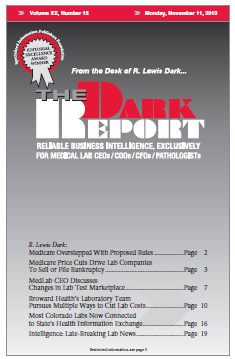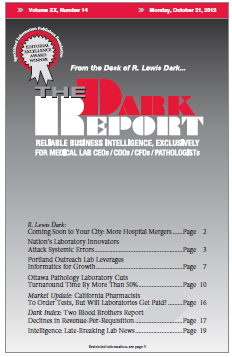Volume XXI NO. 6 – April 28, 2014
In this issue:
FOR DECADES, PATHOLOGISTS HAVE POINTED OUT that their expertise in laboratory medicine can be tapped by physicians to improve utilization of lab tests, contribute to improved patient outcomes, and reduce the overall cost of care. And that’s exactly what’s happening at Atrius Health, where new value-based reimbursement models and integration of clinical care have created an opportunity for pathologists and lab experts to develop care pathways and help physicians order the right laboratory test at the right time. Also, labs are facing bad debt exposure from new patients in ACA plans.


